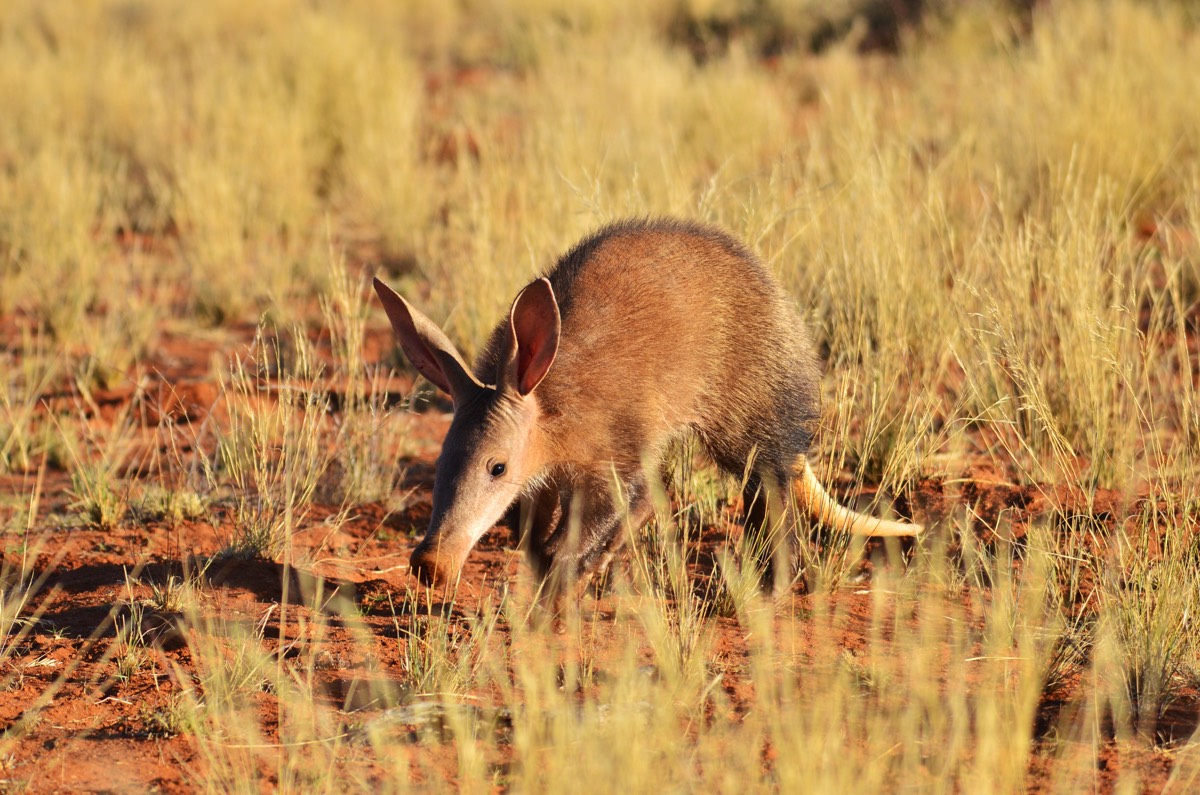Aardvarks May Starve to Death in Warming World

Aardvarks may struggle to survive as climate change heats up their habitat.
New research finds that in times of drought, the burrowing African animals can't adapt enough to survive. In fact, out of 6 aardvarks tracked through one drought-stricken South African summer, 5 died — as did 11 others in the study area. The skinny bodies of the dead, showing protruding bones, indicated the animals had starved to death.
The loss of aardvarks in sub-Saharan Africa could have a ripple effect, researchers said in their new study, which was published today (July 18) in the journal Biology Letters. Aardvark burrows provide shelter for at least 27 other species, wrote University of Lyon evolutionary biologist Benjamin Rey and his colleagues. [In Photos: Wildlife of the Serengeti]
Aardvarks and drought
Aardvarks are nocturnal burrowers that eat only ants and termites. They live in semi-arid regions throughout sub-Saharan Africa — regions that are likely to get hotter and drier with climate change.
Rey and his colleagues tagged six aardvarks in South Africa's Tswalu Kalahari Reserve in July 2012, and then tracked them throughout the following Southern Hemisphere summer, until March 2013. The tags were equipped with sensors that recorded the aardvarks' body temperatures, giving the researchers a sense of how well the animals were able to maintain a healthy temperature throughout the summer.
Only one of the aardvarks tagged would end up surviving the summer, though. The summer of 2012 and 2013 at the reserve turned out to be a year of severe drought. Black globe temperatures — a measurement that takes into account wind and solar radiation — were regularly above 104 degrees Fahrenheit (40 degrees Celsius) and occasionally got as high as 131 degrees F (55 degrees C), Rey and his colleagues wrote. It barely rained until March. The soil was 23 percent less moist than the previous 35-year average. Hot winds, blowing 32 percent faster on average than the winds of the previous 35 years of summer, desiccated the region.
Aardvark failure
The aardvarks couldn't handle it. In the early summer, the researchers found, the bio-trackers recorded stable body temperatures in the six tagged animals, all between 95 and 98.6 degrees F (35 and 37 degrees C).
Sign up for the Live Science daily newsletter now
Get the world’s most fascinating discoveries delivered straight to your inbox.
But as the oppressively hot and dry summer wore on, the animals began to experience fluctuations in their body temperatures, sometimes by as much as 15.5 degrees F (8.6 degrees C). Amid these fluctuations, their overall average body temperatures began to decline. Meanwhile, the aardvarks shifted their behavior from fully nocturnal in the beginning of the summer to diurnal (or active during the daytime) by the end of summer.
The reason for these changes, Rey and his colleagues wrote, was likely that the aardvarks' prey was getting harder to find because the drying soil was not hospitable to ants and termites. The dropping body temperatures of the aardvarks indicated that they were essentially starving to death — as did the 16 dead aardvarks found on the study site that summer, all of which were so skinny that their spines, hips and ribs protruded under their fur.
Droughts are expected to increase in sub-Saharan Africa with climate change, the researchers wrote, which could spell doom for aardvarks. Research has already found that a decline in digging mammals in Australia has had cascading effects on plants and animals that relied on the disturbance of the soil for nutrients and shelter. The same thing could happen in Africa, Rey and his colleagues concluded.
Original article on Live Science.

Stephanie Pappas is a contributing writer for Live Science, covering topics ranging from geoscience to archaeology to the human brain and behavior. She was previously a senior writer for Live Science but is now a freelancer based in Denver, Colorado, and regularly contributes to Scientific American and The Monitor, the monthly magazine of the American Psychological Association. Stephanie received a bachelor's degree in psychology from the University of South Carolina and a graduate certificate in science communication from the University of California, Santa Cruz.









